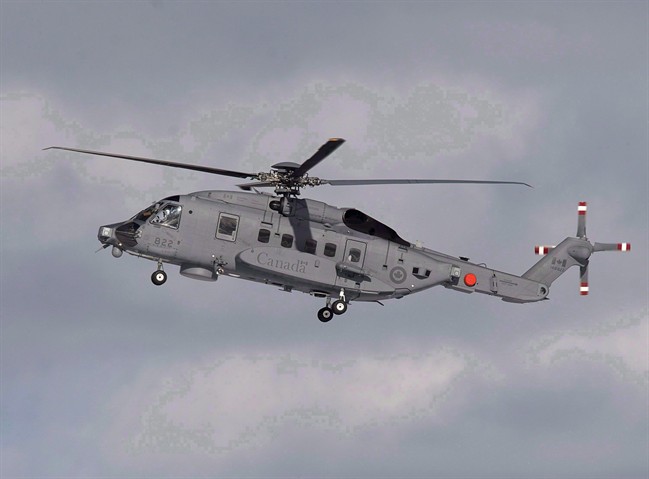The Canadian Armed Forces Cyclone helicopter that crashed into the Ionian Sea entered a high energy descent when it did not respond as anticipated to a complex maneuvering turn, according to a new report.

“This event occurred at a low altitude, was unrecoverable, and the aircraft entered a high energy descent and impacted the water astern the ship,” the Department of National Defence’s From the Investigator (FTI) report found.
READ MORE: Canadian Armed Forces conclude recovery operation of Cyclone helicopter crash
The Royal Canadian Air Force CH-148 Cyclone helicopter was deployed on HMCS Fredericton under Operation Reassurance when it crashed off the coast of Greece on April 29.
All six service members on board were killed. The recovery operation that was being conducted by a combined CAF and United States navy USN team concluded last week after the helicopter and remains of the fallen members were located.
CAF says the investigation has determined the aircraft was returning from a routine surface reconnaissance mission followed by additional training for aircrew proficiency prior to landing on HMCS Fredericton.

Get breaking National news
“The helicopter had flown by the port side of the ship, from stern to bow, before making a left hand turn to establish a downwind leg in preparation for approach to the ship,” the report found.
“The aircraft then commenced a final left turn to set-up for the approach.”

The FIT report indicates that during the final complex manoeuvring turn to close with the ship the aircraft “did not respond as the crew would have anticipated,” resulting in the crash.
The investigation has not yet concluded and will focus on aircraft systems and human factors, CAF said.
“We remain committed to conducting a thorough investigation to identify all we can that may contribute to safer flying operations,” said Col. John Alexander, DND’s director of flight safety, in a statement.
READ MORE: U.S. Navy helping Canada recover helicopter from fatal military crash









Comments